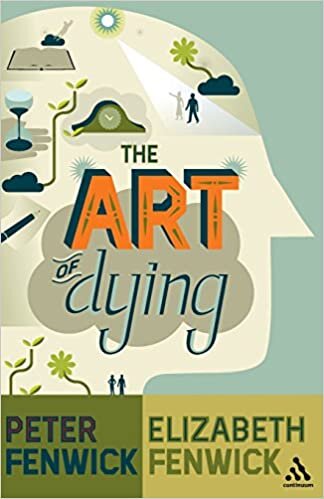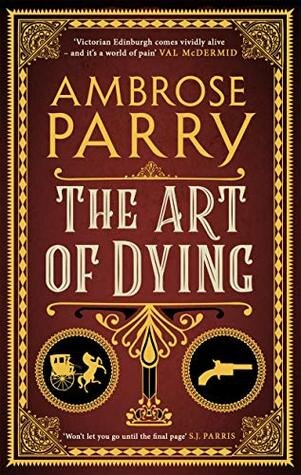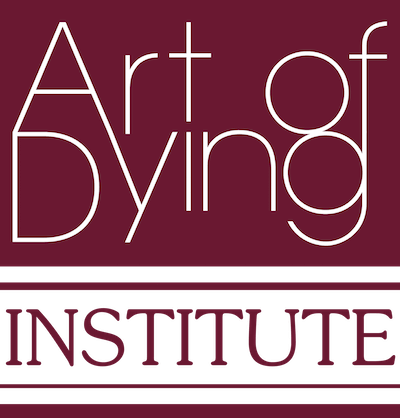Is Dying an Art?
Ars moriendi – The Art of Dying – was originally published in Latin as two related texts, a longer and a shorter in around 1415 and 1450, and gave advice on how to ‘die well,’ according to Medieval Christian precepts. It appeared in over a hundred editions in most Western European languages.
From the shorter Ars Moriendi (all of its pages were printed from single wooden blocks). Here demons tempt a dying man with crowns, a medieval allegory to earthly pride.
It is thought that England’s first printer, William Caxton, interrupted work on another text to translate a French version of the Ars moriendi, which he titled The Art and Craft to Know Well to Die, in 1490, the same year his wife Maude died. This may have been the start of 'death lit,' traceable to the present, a genre that seems to be having a bit of a moment right now, with Atul Gawande's 'Being Mortal' the most obvious (and excellent) example.
'Here begynneth a littyl treatise...' - an extract from Caxton's book.
Originally written by an unknown Dominican friar in the aftermath of the Black Death (which halved Europe's population), and within the profound social, religious and political upheaval of the Middle Ages, Ars moriendi might be evidence of a shift in the way people both experienced and understood death.
It has been recently updated, signalling another shift in contemporary attitudes toward death and dying. The Catholic Church has done so to 'assist terminally ill people and their loved ones deal with death,’ according to this article in the Guardian. 'The Art of Dying Well' website includes animations with a voiceover by the actor Vanessa Redgrave, said to have had a stiff brush with mortality and a wish to die after health complications.
However, several other books, websites, films and other things also called 'The Art of Dying' clog the digital ether.
Is dying really an art? I guess it depends on what you think art is. Answering that feels a little complex. But here goes... Conventionally, art might be defined as skill acquired by experience, study, or observation (Merriam-Webster Dictionary). Art is also a noun, a thing, as in a work of art or artefact, but a type of behaviour too, which can be artful.
Here's a nice one - 'Art is a way of grasping the world. Not merely the physical world, which is what science attempts to do; but the whole world, and specifically, the human world, the world of society and spiritual experience.' (For the full expression of that idea, look here.)
So, whatever art is, it's quintessentially human. As a reflection of human experience, it is subject to notions of value, as good or bad, worthwhile or not. So can dying be an art? Can it be skillful, if it is so utterly happenstance and beyond our control, and also so banal – so normal – that every single one of us does it?
Certainly, the idea of a ‘good death’ has gained in mainstream popularity and become a desired way to go. Perhaps this is a response to a prevailing culture of death denial, of avoiding death at any cost. This too is shifting, I think, as people everywhere tire of the false promises of consumer capitalism and recoil from a scientific tendency for overmedicalisation (is that a Scrabble word?) at the end of life. Still, in our own peri-Western culture, suffused as it is with a plurality of local African and other belief structures, death largely remains taboo and is sometimes simply seen as a failure of life.
From The Lancet, 'The Promise of a Good Death', May 01, 1998
‘What is a good death, and how could you increase your chances of having one?’ was a popular discussion point at the Death Cafes I used to attend. I liked to say my father had one – quick, and in a place he loved, after saying that he was ready to go and had enjoyed a wonderful life. He was 67. Some people pulled in their breath when they heard that. Certainly, I’ve heard of painful deaths, drawn-out deaths, and others. Messy and sad deaths.
In a useful little online essay, ‘The Dangerous Myth of a Good Death,’ blogger and nurse Kathleen Clohessy quotes from Frank Ostaseski’s lovely treatise, 'The Five Invitations: What Death Can Teach us about Living Fully': He says, ‘We treasure the romantic hope that when people pass way, everything will be tied up neatly. All problems will have been resolved, and they will be utterly at peace.’ But this happens rarely. ‘Very few people walk toward the immense challenge of dying and find peace and beauty there… who are we to say how another should die?’
I think this is the risk of calling death an art – that it’s up to the dying person to do it well, or not, imposing some kind of value judgement on it. Think of all those people you’ve met, bleating ‘but oh I’m not creative at all!’ now being informed that their dying was meant to be done with artful skill, done well. Wasn't school hard enough, relationships, all the rest? Now we must excel at death too?
Clohessy continues: ‘Placing expectations on the dying is an easy mistake to make. But when we do so, we limit our ability to open our hearts to what is happening and be truly present with the person who is making the journey in the here and now… When we impose our beliefs about what death “should” look like on someone who is dying, we deny them unconditional love and acceptance they need and deserve.’
So, calling death an art may well make things... well, difficult. This is not to say one should not prepare for death – by all and every means, prepare for the inevitable by talking about it and doing what you can to make it easier for you and your loved ones.
The ‘death positive’ movement, with the redoubtable Caitlin Doughty, possibly the world’s most popular mortician as its high priestess, is a growing community which has some really useful things to say in a manifesto of sorts on their website. The Order of The Good Death, which she co-founded, has a mission to ‘make death a part of your life.’
'Faces of Death' by Landis Blair.
Visit talkdeath.com for '15 Death Positive Artists you Should Know.'
Implicit in most understandings of death however, as well as this idea of a ‘good death’ and dying as an ‘art’ is the veiled assumption that death is some sort of final act.
For me though, death is not just an occurrence. Instead of seeing death as ‘the end,’ consciousness of it provides the means to live a full live. Without wishing to intrude on the province of the suffering, I understand that I am already dying, and that every day death is with me. It is in every cell of skin that falls from me, in each expiring blood cell that perishes within. I’m slowly dying, inside and out. Death surrounds me and I am in it, as much as I am alive and in life. It is in the grief of my friends, in my own grief too. In my own dying I find my vitality. Death sharpens my life.
So it’s a lifelong process, this dying shtick, kicked off at the moment of birth. Carl Jung reminds us that ‘Life is a short pause between two great mysteries. Beware of those who offer answers.’ Perhaps it’s this voracious scientific urge towards a complete system of knowledge that wants to dominate this unknown province, this final mystery – in fact, to cheat it, to perhaps even bypass it entirely - the next big tech 'disruption.'
Gimme a break. I do well to remember that death is a mystery, and something that mystifies. It’s also easy to theorise about and extrapolate upon. Until it happens to oneself.
A good death? An artful expiration? If you really must have one, then, to paraphrase Dr Kathryn Mannix, a palliative care doctor and author, if you want to die well, then first - live well.
That’s about as much as one can do, I think. But what do you think?








